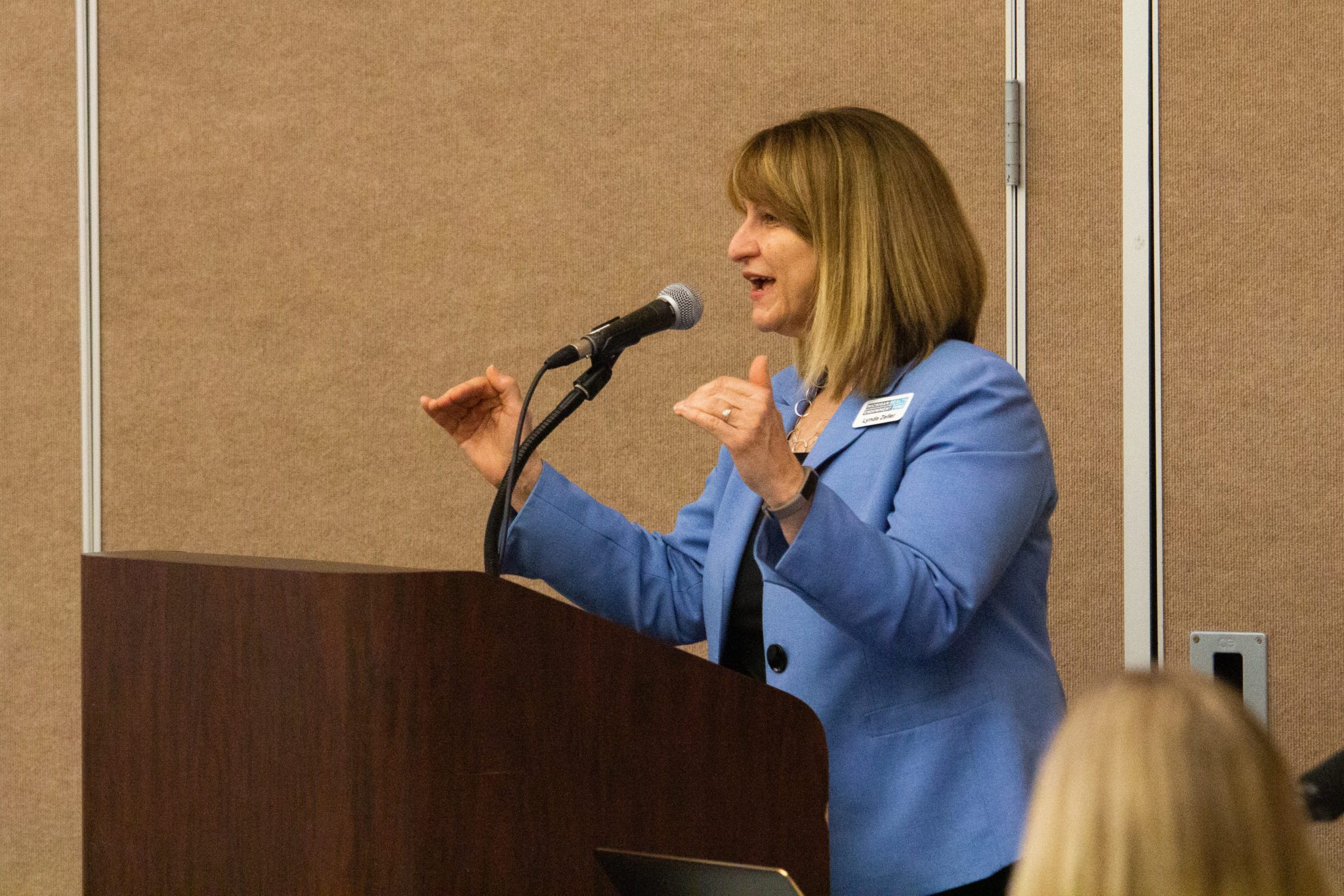
In July, Health Fund Senior Fellow Lynda Zeller started working with the Substance Abuse and Mental Health Services Administration (SAMHSA), moving to part-time at the Health Fund to allow time for the new role. We sat down with Lynda to learn about what she’s working on and what it could mean for behavioral health in Michigan and beyond.
Let’s start with the basics. Tell us about your new position!
I’m working with SAMHSA in six Midwest states—Illinois, Indiana, Michigan, Minnesota, Ohio, and Wisconsin—to help state authorities increase impact and improve collaboration in behavioral health. My role is to be a consultant, subject matter expert, and supporter of the challenging work underway in the Midwest. I will be focused on connecting dots between the states for shared learning and greater impact, whether that be hyper-local initiatives or system-wide policies.
In other words, I’m looking for cool stuff and sharing cool stuff!
How did this come about?
To put it simply, SAMHSA has been paying attention to the work going on in Michigan for years, and they’ve liked what they’ve seen. They’re especially excited about our behavioral health ecosystem development, school-based support, and development in Medicaid.
When COVID rattled the field, drastically increasing the need for behavioral health services, Michigan’s proofs of concept became even more valuable. It was the right moment for an increased commitment to promote and replicate great work, and I’m grateful that SAMHSA saw me as someone who could help with that effort.
You decided to split your time between SAMHSA and the Health Fund. Why was that?
First of all, I love working with the Health Fund and all of our amazing partners, and I didn’t want to lose that. I’m so proud of the partnerships we’ve cultivated and growth we’ve achieved. But strategically it was important to me, too. Even when navigating these high-level regional connections, the goal is still to improve health and wellbeing at the local level, and staying in touch with community work is key. Losing that would be like losing the lab in academia—I didn’t want to miss out on that really important touchstone.
I’ve also heard you say that this position will be mutually beneficial to these other Midwest states as well as the Health Fund and Michigan.
Yes! I think it comes down to that concept of connecting the dots: as much as I’m sharing, I’ll also be learning a lot. There are so many amazing people and organizations out there; bringing them together more can only do us good.
For example, I had the opportunity to meet with the National Center of State Courts, a nonprofit organization that helps courts address a wide range of issues. They are doing amazing work in behavioral health and have the type of unique perspective that we may not otherwise have gotten the opportunity to learn from.
Testing new models and expanding proven ones is a tried-and-true approach for us at the Health Fund: this new opportunity will increase our ability to do that.
What is Michigan doing well that these other states could learn from?
Some of Michigan’s innovation in crisis response is breaking tons of barriers. For example, we’re funding a crisis respite program and an initiative that brings behavioral health clinicians to those facing crises in shelters. Both are changing how we support and deliver crisis care. I would love to see similar models implemented and scaled in other areas of the Midwest.
We’ve also seen quite a few pilots lead to state policy changes, opening the door for more work in that area. Wayne State’s work in jails is an example—a few years ago, they introduced behavioral health services in a crucial area that had limited state funding. Since then, that work has expanded into policy, turning a novel model into what’s becoming a staple of behavioral health support in the state.
One more: I can’t wait to share some of our data-driven work around racial disparities. It’s locally driven, it’s communicated through strong data, and it takes on a significant disparity the Black population is experiencing. This type of approach could be a game-changer in reducing disparities and promoting equity.
Conversely, what areas of behavioral health could Michigan improve on or learn from other states?
We struggle a little bit in whole health—by that I mean having behavioral health and physical health systems work together. I think we can learn a lot about this from other states.
There’s particular opportunity in the child welfare system, where there is a real need for behavioral health services, but the connections at this point are limited and in need of improvement. I would love to see some models that could help us improve in that area.
What does success in this position look like?
It goes back to that idea of this work being mutually beneficial.
Number one, I want to see some of the amazing work from Michigan’s nonprofits being replicated across the region and even country. There is so much good work to share. Number two, the Health Fund and, in turn, Michigan communities, benefit from the sharing, learning, and connections from other states’ work—their fingerprints are on us as much as ours are on them.
A third, and this is a bit pie in the sky: we see policy changes in other states and even nationally in the same way we’ve been able to see behavioral health policy development in Michigan. That would be an indicator of concrete, sustainable growth. But it will take time to get there.
If you could change any one thing in Michigan’s behavioral health landscape, what would it be?
I want Michigan’s employers, economy, and education to value and invest in behavioral health workforce, services, and structures as much as physical health. There are inequities in both, but there is particular inequity in behavioral health. And the work in this space is so incredibly valuable.
